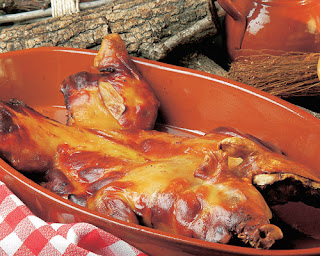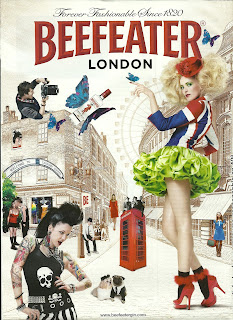SEGOVIA'S CUISINE: Cochinillo al horno
The most typical dish in Segovia is the roasted piglet or in spanish ''Cochinillo al horno''. We will learn today this delicious recipe for eight people, which is ideal for a festive meal as Christmas.
-1
piglet of 5 kilos
-1
and a half glass of water
-200 g of fresh lard
-4 garlic cloves
-1 teaspoon of salt
-3 laurel leaves
-1 teaspoon of thyme and oregano
To strenghthen the flavor of the meal, the garlic gloves must be peeled, chopped and
mixed with the lard, the salt, the thyme and the oregano the day
before cooking the piglet.
The next day before the baking process, the oven is
warmed up at 150º during half an hour while the piglet is buttered
with the sauce prepared the day before. Then, it is put in
an tray with the skin looking upwards and a glass of water with the laurel leaves added.
The head
and the skin should be poked with a fork to prevent the bubbles, and after, the pork gets buttered with it's fat to achieve the crunchy texture.
While the baking starts, the piglet is placed in the central part of the oven with heat
from voth sides for about half an hour. If the tray remains dry
during the process, a bit more must be added.
To get the crunchy texture desired, the oven’s temperature must be increased to 190º for the last 20 minutes, so the amount of baking time doesn't last more than 2 hours.
Once the pork is removed from the oven and separated from the sauce, here comes the chopping tradition:
This method is one of the main reasons why the roasted piglet from Segovia is the most unique and special recipe in the world.
The ''cochinillo'' is so crispy in the outside but so tender in the inside, that it is easily chopped with a big plate into many pieces.
When it is finally carved, it is now time to serve it with a good salad or fried potatoes and some white wine. And voilà!
This food clearly represents the culinary aspects of Segovia. Not only because it is a recipe that leaves anyone open-mouthed... It also contains a tradition from hundreds of years ago that still remains alive.





Comentarios
Publicar un comentario